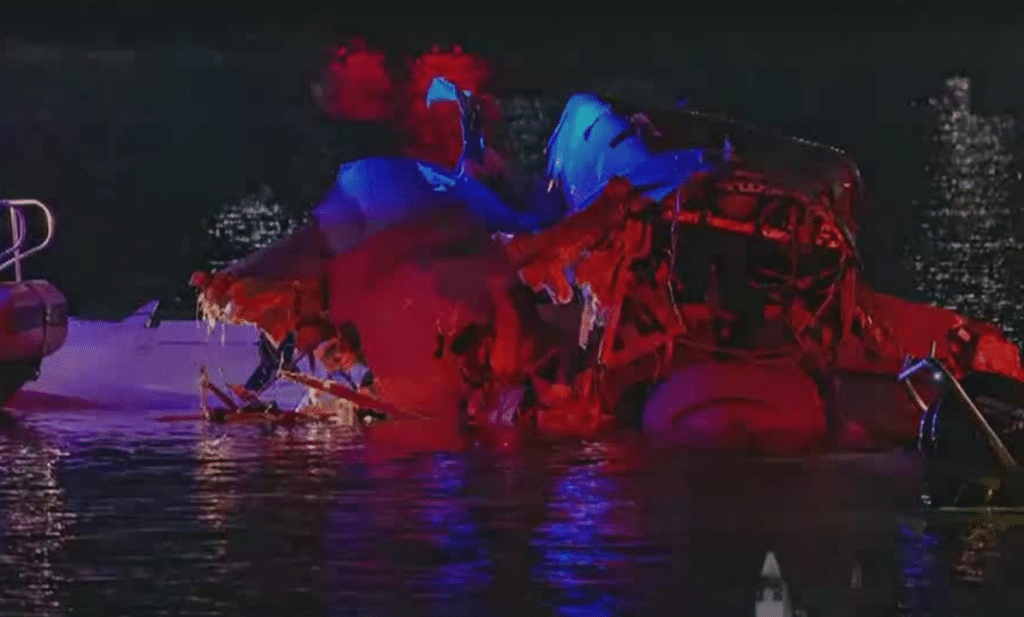New Evidence Sheds Light on Fatal Midair Collision Near Washington D.C.

KPRC 2 Click2Houston / YouTube
On January 29, a tragic event unfolded over the Potomac River when a passenger plane with 64 people on board collided with an Army helicopter. The collision resulted in the loss of 67 lives, leaving many stunned and questioning how such a disaster could happen. Among those who perished were men returning from a hunting trip, U.S. figure skaters, and Ryan O’Hara, the crew chief of the Army helicopter.
Preliminary Findings After the Crash
Early investigations into the crash point to conflicting altitude readings as a potential cause. Reports indicate that the Black Hawk helicopter involved in the collision was operating at its maximum allowable altitude of 200 feet. However, the passenger plane’s flight recorder showed the aircraft flying at approximately 325 feet, with a margin of error of 25 feet. This discrepancy created a 100-foot difference between the two aircraft.
The National Transportation Safety Board (NTSB) is currently leading the investigation to determine how these conflicting altitudes contributed to the crash. According to NPR, the NTSB revealed that the Army helicopter was on a training mission and might have been flying higher than permitted. This possibility is being thoroughly examined as a factor in the collision.

Another significant focus of the investigation is whether the helicopter crew had night vision goggles. These devices are commonly used during training exercises, like the one the helicopter was conducting that night. The absence of night vision equipment may have impaired the crew’s ability to maintain proper awareness of their surroundings. Investigators are also working to retrieve data from the helicopter’s black box. However, the crash into the Potomac River left the black box submerged, causing delays in the data retrieval process due to water damage.
Commenting on the challenges of aviation safety, Captain Sully Sullenberger remarked,
“We have to realize how many things have to go right every day for us to have this now ultra-safe transportation industry. Any lapse could potentially be fatal, even though we have a lot of safety layers in there. If all the dominos line up in the wrong way, we can have, on rare occasions, a catastrophic event.”
Challenges Faced by Investigators
The investigation’s complexity has been underscored by Brice Banning, the NTSB investigator in charge. He stated, “This is a complex investigation. There are a lot of pieces here. Our team is working hard to gather this data.” The process involves analyzing the flight data, interviewing witnesses, and reconstructing the events leading up to the collision to understand how and why it occurred.
Another layer of difficulty stems from the lack of action on safety recommendations made by the NTSB over the years. Todd Inman, an NTSB member, expressed frustration at the slow adoption of these measures. Inman shared,
“You want to do something about it? Adopt the recommendation of the NTSB. You’ll save lives. I don’t want to have to meet with those parents like that again.”
The NTSB has made hundreds of safety recommendations aimed at preventing accidents like this one. However, many of these proposals have yet to be implemented, raising concerns about whether more proactive measures could have avoided this disaster. Inman’s comments highlight the urgency of addressing these unresolved recommendations to improve aviation safety and prevent future tragedies.
A Community in Mourning
The loss of 67 lives has left a profound impact on the families, friends, and communities connected to the victims. Among them were individuals from diverse walks of life, including athletes, service members, and civilians. The incident has also reignited discussions about the importance of aviation safety and the need for consistent adherence to regulations and training protocols.
The NTSB’s investigation continues as officials work to piece together the events of that night. With each discovery, they aim to provide answers to the grieving families and implement changes that could save lives in the future.














